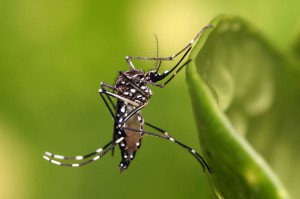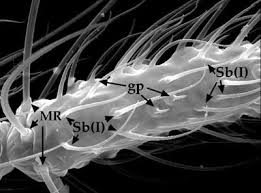This is a guest blog by Dr. Julien Pelletier, School of Life Sciences, Keele University

Mosquitoes are notorious for their remarkable ability to find suitable hosts to feed on. A complete understanding of these mechanisms is important when developing effective strategies to control mosquito populations in the field and to reduce the transmission of pathogens to humans.
For these insects, host-seeking relies mainly on a highly sophisticated olfactory system, involving a wide array of proteins that mediate the detection of a myriad of chemical cues from the environment. It is through the detection of a precise combination of odours mediated by a specific set of proteins that will ultimately lead to stereotypical behaviours, such as host-seeking.
In a previous BugBitten blog I reported on the importance of odorant reception and carbon dioxide reception pathways in host location and host discrimination. Briefly, it is generally agreed that mosquitoes rely on at least three main types of host cues (body heat, body odour and CO2), and that two of these cues in any combination are sufficient to elicit host-seeking behaviour.
The mosquito Aedes aegypti, a widespread vector of dengue and yellow fever, has evolved specific adaptations to become specialised in biting human hosts (anthropophily). However, some ancestral populations in Africa still prefer biting non-human animals (zoophily). In Kenya, both anthropophilic and zoophilic populations coexist, offering a unique opportunity to understand the genetic bases of host preference.
To delve further into the molecular mechanisms of host discrimination and to identify proteins directly involved in that process, researchers at Rockefeller University in New York traveled to Africa, where they conducted a field collection to isolate independent colonies from natural populations of Aedes aegypti.
Laboratory-based behaviour assays, where mosquitoes are given a choice between different hosts, confirmed that a number of colonies strongly preferred biting humans whereas others preferred biting non-human animals. From an ecological perspective, it is worth noting that anthropophilic colonies were collected from indoor habitats whereas zoophilic colonies were isolated from lush forested areas.
To isolate the genetic factors responsible for host preference, a comparative transcriptomic analysis was conducted using the RNA-sequencing technique. With this powerful method, antennal transcript levels could be monitored and compared between human-preferring and animal-preferring populations.
An exhaustive list of genes up-regulated or down-regulated in one or the other behavioural clade was determined, revealing that two genes encoding odorant receptor (OR) proteins were significantly enhanced in the anthropophilic population. Considering that ORs, a highly variable multigenic family of proteins, ensure the direct interaction with odor ligands in the antennae, one of these ORs (AaOR4) was logically selected as a promising candidate for further characterisation.

The functional characterisation of AaOR4 was performed in the empty neuron system ofDrosophila, a system where a mosquito OR is expressed into a specific neuron of the fly antennae and its response profile to odorant molecules measured using electrophysiological recording methods.
These experiments revealed that AaOR4, when stimulated by chemicals derived from a human odour extract, was indeed highly sensitive to sulcatone, an odorant which is produced at high levels in humans compared to other animals. Interestingly, another highly anthropophilic species, the malaria mosquito Anopheles gambiae, is also equipped with ORs that are highly sensitive to sulcatone, suggesting that this ligand may be a common cue for human-preferring mosquitoes.
Similarly, a few years ago, another group of researchers at the University of California Davisidentified nonanal as a main component of bird odour, as well as a primary host cue for Culexmosquitoes. But no nonanal-detecting OR was found.
The analysis of the allelic diversity of AaOR4 in the natural populations of Aedes mosquitoes in Kenya revealed seven main alleles, including a subset of allelic forms with a higher sensitivity to sulcatone. Not surprising, anthropophilic mosquitoes were found to possess the most sensitive AaOR4 alleles to sulcatone. Thus, both gene regulation (higher transcription) and “optimized” coding sequences (leading to higher sensitivity) for AaOR4 seem to contribute significantly to mosquito host preference.

Comments